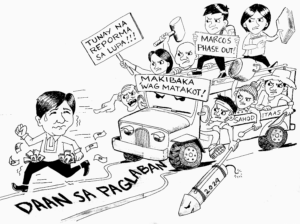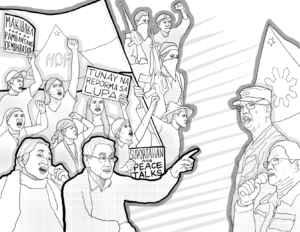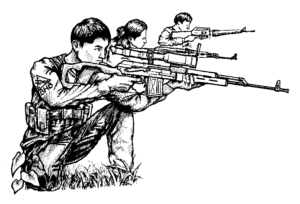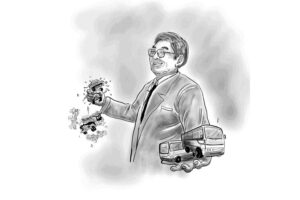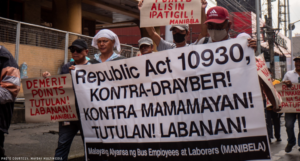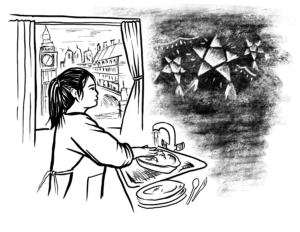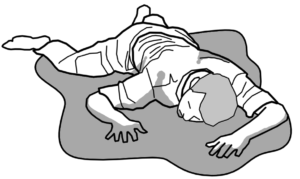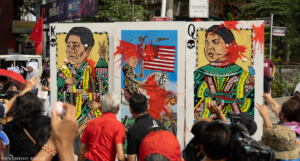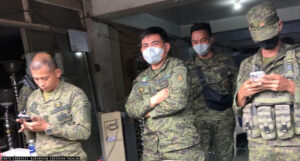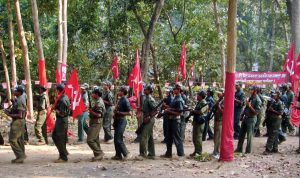Marcos accountable for the massacre of drivers' and operators' livelihood

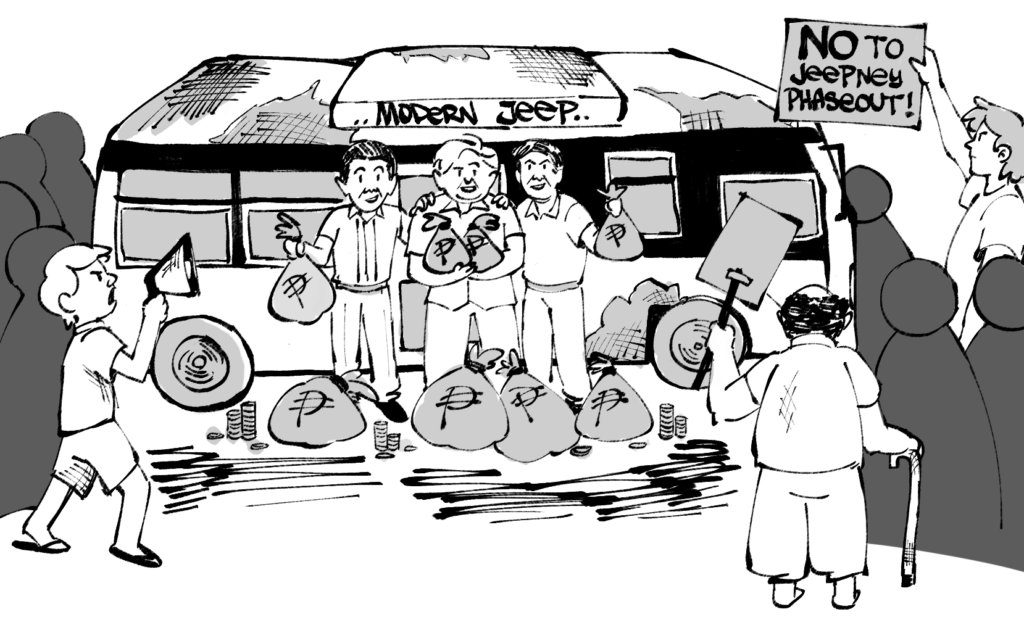
The US-Marcos regime is set to run-off public utility vehicles (PUVs) with its insistence to implement the forcible removal of traditional jeepneys and other mass transportation from the road in the guise of modernization by the end of the year. This will lead to the massacre of livelihoods of thousands of drivers and operators and suffering for ordinary commuters reliant on jeepney as their main mode of transportation.
The forced consolidation of franchises and the formation of “corporations” or cooperatives is only the first step towards the eventual complete removal of jeepneys from streets, replacing them with old and new vehicles and laying out grandiose, very expensive and debt-financed transportation infrastructures. (See the related article “Slaughtering the King of the Road, a sacrifice on the altar of imperialist Japan“)
On December 12, Marcos outrightly misrepresented that “70% of the operators have already entered and consolidated” under the bogus modernization program. He insultingly tagged as a “minority” the thousands of drivers and operators who fought the bogus program since 2017. In fact, the state had been forced to extend the “deadline” twice due to the opposition of the majority of those in the sector.
Furthermore, it was pure distortion of the truth. According to the drivers, the data parroted by Marcos refers to the total number of consolidations for all types of PUVs nationwide, including buses. In fact, only 26% of the jeepney units have consolidated in the National Capital Region (NCR), while only 36% of the UV Express have consolidated. This shows the widespread opposition of drivers to forced consolidation.
When the new year starts, about 30,862 units of jeeps and 4,852 units of UV Express will not be able to operate in NCR as they are not consolidated. Nearly 64,000 drivers and 25,000 operators in region will lose their livelihood. This will drive nearly 20,000 families throughout the NCR to starvation. Nationwide, 64,639 PUV units have not consolidated and 140,000 drivers and 60,000 operators will lose their jobs. This will affect 28.5 million passengers.
In its attempt to deceive drivers, the Land Transportation Franchising and Regulatory Board (LTFRB) issued Memorandum Circular 2023-051 on December 15, allowing units that have already filed for consolidation to travel pending their approval by the agency. Drivers considered this an “underhanded” move by the agency to continue to force them to consolidate franchises.
Deception of consolidation
The price of a “modern” vehicle assembled domestically using imported engines and parts, and one that has passed the Euro-4 emission standard, is around ₱1.8 million-₱2.6 million. A fully imported vehicle costs ₱4 million. This is beyond the capability of drivers and operators. Nevertheless, some of them took the risk, consolidated their franchises, and bought, through credit, units that conformed to the program’s standard.
An article by the Ibon Foundation exposed the consequence one such cooperative that has turned to consolidation and “modernization.” Its drivers and operators borrowed a whopping ₱70 million from the bank to acquire 15 modern jeeps in 2020, to which they added 11 units the following year.
They had to raise ₱33,000 monthly for each unit to pay off the loan. Wages and maintenance add to the operation of the cooperative. In their calculations, a daily remittance of ₱6,000-₱7,000 per unit is needed to prevent operational losses. In reality, a unit can only remit up to ₱3,000 per day.
High prices of gasoline burdens them doubly because modern jeeps consume twice as much. The resulting monthly income is not enough for the drivers and their families. Others just went back to driving a traditional jeep that incurs lower oil consumption and to the “boundary system” (paying rental to a single operator.)
According to drivers and operators, in their long years of driving jeepneys, they experienced being bankrupt only under “modernization.” One even said he used to earn ₱3,900 “boundary” with three units of traditional jeep, but now only earn ₱625 daily with the “modern jeeps.”
Transport crisis
Undoubtedly, the sudden and forced removal of traditional jeepneys from streets will be a huge pain to commuters when the year starts, or even after the grace period the LFTRB gave to give the majority of franchises the chance to consolidate. In Metro Manila alone, they transport an estimated 75.8 million passengers per kilometer, according to a 2015 study. It is the most widespread mode of transport, the most affordable, and according to experts, most suitable for the climate and existing Philippine roads, especially in the provinces.
Fare is estimated to increase more than twice, once the kings of the street are removed. According to a study by a University of the Philippines institution in 2021, the minimum fare of a modern jeepney could go up to ₱34, from the current ₱13 for the first four kilometers on a traditional one. Even now, the modern jeep fare is ₱2 more expensive.
According to the study, cooperatives will be forced to raise fares to pay for the very expensive modern jeeps and cover periodic maintenance due to their poor quality.
Life-and-death struggle
Drivers and operators again launched a transport strike and mass protest nationwide this December. They held a two-day transport strike on December 14-15 and marched to Mendiola to protest. They shouted: Marcos traitor to the driver, heartless to the commuter, puppet of the corporate and foreigner!
The groups Pagkakaisa ng mga Samahan ng Tsuper at Operator Nationwide (Piston) at Samahang Manibela Mananakay at Nagkaisang Terminal ng Transportasyon (Manibela) also announced that they will continue with their protests, mass actions and transport strike until the end of the year, before they are completely banned from streets.
According to Piston and Manibela, drivers, operators and commuters will continue to fight the forced consolidation and crap, oppressive, and bogus PUV Modernization Program. They are determined to “corner” the Marcos regime and charge it for the massacre of the impoverished Filipinos’ livelihood.

